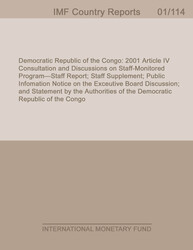
Slovak Republic: Financial System Stability Assessment
Slovak Republic: Financial System Stability Assessment
READ MORE...
Volume/Issue:
Volume 2025
Issue 074
Publication date: March 2025
ISBN: 9798229005968
$20.00
Add to Cart by clicking price of the language and format you'd like to purchase
Available Languages and Formats
| English |
Prices in red indicate formats that are not yet available but are forthcoming.
Topics covered in this book
This title contains information about the following subjects.
Click on a subject if you would like to see other titles with the same subjects.
Banks and Banking , Finance , Slovak Republic FSAP , FSAP finding , solvency risk , FSAP mission , FSAP update , Anti-money laundering and combating the financing of terrorism (AML/CFT) , Stress testing , Commercial banks , Financial Sector Assessment Program , Global , Central and Eastern Europe
Also of interest
Summary
This paper discusses Financial Sector Stability Assessment report as part of Financial Sector Assessment Program (FSAP) in Slovak Republic. The Slovak Republic FSAP took place amidst an economic recovery and tighter financial conditions, despite the start of an accommodative cycle and signs of overvaluation in real estate markets. The financial system remains predominantly bank-centered, highly concentrated, with significant foreign ownership and no material direct interconnections within the system. Banks rely on a domestically oriented traditional business model and maintain high capital buffers and ample liquidity. The systemic risk analysis focuses on the banking, nonfinancial corporates, and real-estate sectors. Key risks to financial stability stem from external factors coupled with potential corrections in residential and commercial real estate valuations. The stress tests found the banking system resilient to severe macro-financial shocks with all banks meeting minimum capital requirements and most banks remaining liquid against adverse shocks. It is imperative to strengthen supervisory powers to ensure operational independence and streamlining off-site supervisory activities to align with risk classification; and strengthening on-site inspections for key risk areas.
Copyright © 2010 - 2025
Powered by:
AIDC



